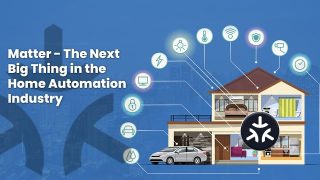Home automation has long been a mishmash of standards and varying protocols. Along with that came confusion. There’s Z-Wave, ZigBee, C10 and many other often proprietary “standards”. Consequently, the adoption of home automation tech by many homeowners was either too expensive, too difficult, or too confusing, and that’s not a scenario which encourages adoption.
Thankfully the big players in the Home Automation industry including Google, Amazon, Apple, Samsung and Smart Things have got together to form the Connectivity Standards Alliance (CSA), to build out a new Home Automation protocol called Matter spawned from the ZigBee alliance. This will allow devices to talk to each other, talk to cloud services and work seamlessly across multiple ecosystems and multiple vendors and eliminate the above-mentioned issues. Essentially, any Matter device can work with any other Matter device, platform or hub.
Matter originated from the ZigBee alliance in 2020. As such, it defines device categories such as cameras, thermostats, air quality sensors, blinds and shades, door locks, light bulbs and light switches, 240V plugs, robot vacuums, air conditioners, sensors, media devices and appliances. More and more device categories are added every week.
Bluetooth is used for on boarding a Matter device. After that, the device runs on Wi-Fi/Ethernet or Thread.
Wi–Fi/Ethernet is suitable for high bandwidth devices such as cameras. They are designed to operate on the LAN even if Internet connectivity fails. This also results in increased speed by remaining local.
Thread is a self-healing mesh network (much like ZigBee) based on IEEE 802.15.4. It is suitable for low-speed devices such as light switches and door locks. It is particularly suitable for low power devices. Thread devices use native IPv6, and they can talk to each other on the local network so they don’t need a Gateway for operation within the home. If a Thread network is required to see the Internet, it requires a Border Router, but this does not need to be a dedicated device. Instead, it is usually integrated into a Thread device which is always powered on.
Security is a high priority using PKI certificate-based encryption. This ensures devices cannot operate on a Matter network without a certificate which is issued by CSA but only after a device has been tested and certified for use on a Matter network. Effectively the security requirements police the certification of the hardware.
There are over 500 organisation who are members of the CSA and hence Matter.
Although Matter offers a lot of positives, there are issues to be aware of.
- Many home automation devices don’t support Matter at all (yet).
- Some of the functionality and configuration is supported only in the manufacturer’s original app rather than Matter controller or app. This is a widespread issue. It means you have some control through the Matter platform, but still need to revert to the manufacturer app to support other features.
It’s clear the standard has to progress further before it achieves widespread acceptance and implementation, but its acceptance has already progressed a great deal, yet is in it’s infancy. Consequently, confidence is high it will become a universally accepted standard in due course.
Developing with Matter.
There are various steps to develop an embedded product with Matter. Two vendors we all know namely Silicon Labs and Nordic offer solutions. Both have various SoCs for Wi-Fi 4, 5 and 6 as well as Thread. They are available for different device categories rather than one size fits all. They include the radio, protocol stack, security and all the firmware to implement a Matter device. You add your application code and “that’s virtually it” as they say (although as engineers, we know there’s a lot more to it than that). An SDK is available for download as are evaluation boards.
Further Reading
Below is an easy to understand article about Matter
Below are links to Nordic’s and SiLabs offerings

